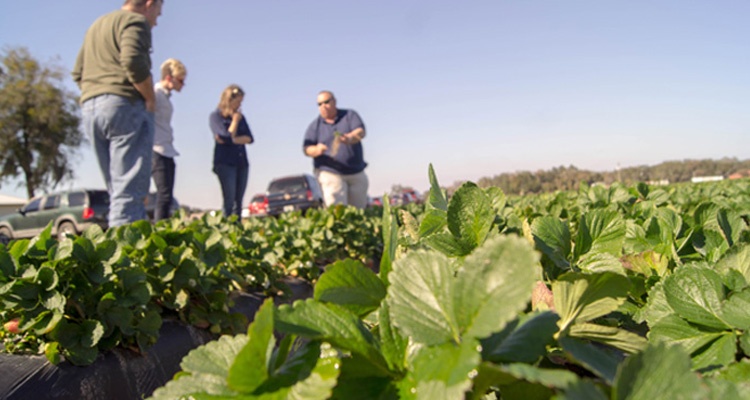Weather can be the source of a variety of farming struggles for growers. But did you know that many farmers actually rely on cold temperatures to help prevent insect infestations?
Growers have been dealing with ever-changing weather for centuries. However, as weather patterns change, it becomes much more difficult to follow the traditional cycle of spring, summer, winter and fall, and even more difficult to predict weather day-to-day. With increasing weather variability, farmers now have to rely on new farming tactics—like precision agriculture—to control insect population.
LEARN MORE ABOUT HOW YOU CAN START IMPLEMENTING PRECISION AGRICULTURE ON YOUR FARM.

SIZEMORE FARMS
John Sizemore of Sizemore Farms in Plant City, Florida, was hoping for temperatures to be low enough to help reduce the insect population. Since temperatures were higher than average at the beginning of the season, the insect population exploded.
“Because there was an infestation, the provider of the plants treated them with crop protection beforehand,” Sizemore explained. “This treatment built up a tolerance, so when we got to them, our application was useless, sort of like antibiotics do with people.”
Unfortunately, this is becoming a consistent issue growers are having to face. As global temperatures rise, more insects survive the winter months, meaning more resources need to be used to combat infestation. And as Sizemore mentioned previously, you cannot predict whether or not the treatments you use will even have an effect on the insects. By not treating the plants properly, this not only wasted the growers’ time and money, but it ultimately reduced their yield as well.
FIGHTING INSECTS WITH PRECISION AG
When Sizemore began implementing precision agriculture solutions along with the Highland Precision Ag team, he was able to identify the areas where the insect population was building. From there, John was able to try different combinations of treatments with researchers and created custom formulations that would halt the sudden growth in the insect population.

This process may sound lengthy and complicated, but in fact, it’s pretty straightforward. The Highland Precision Ag team uses remote sensing technology to capture aerial images at a resolution of 5.8 cm per pixel. They use this data collected to identify problem areas, pinpoint scouting efforts and are able to track the effectiveness of spray applications. It takes HPA around 24 hours to send results back, allowing growers to quickly identify a treatment plan, giving the farmers the ability to make quick, accurate decisions about how to maximize their harvest.
“HPA GAVE US INSIGHT TO WHAT WAS HAPPENING WITH OUR STRAWBERRY CROP THAT WAS PREVIOUSLY UNDETECTED,” SIZEMORE SAID OF HIS FIRST EXPERIENCE WITH PRECISION AGRICULTURE TECHNOLOGY.
If you’re interested in learning more about the technology we use to help farmers overcome a wide range of complex challenges, please visit our website.